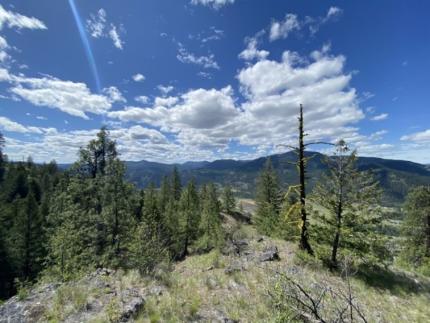
Wildlife Program report: May 16-31, 2024
Managing Wildlife Populations
Vulcan Bighorn Sheep Habitat Tour: Wildlife Biologist Prince toured a Department of Natural Resources (DNR) parcel within the core use area of the Vulcan Bighorn Sheep Herd. The tour was attended by DNR staff members, Washington Department of Fish and Wildlife staff members, and Confederated Tribes of the Colville Reservation staff members. The group would all like to see some habitat improvements (timber harvest) occur on the parcel and will be working together to explore funding opportunities. Access to the site is limited and may require helicopter logging which is quite expensive.

Sharp-tailed Grouse: Biologist Lowe investigated the last recorded location of a male sharp-tailed grouse in Lincoln County. The bird, wearing a GPS transmitter as part of the April translocation from British Columbia, had not reported a location in several days. A roost pile was found but there was no transmitter or sign of mortality.
Biologist Brinkman investigated the last recorded location of a different sharp-tailed grouse that had not uploaded any new locations in over a week. This one was on private land in Lincoln County. No sign of grouse activity was discovered in the vicinity of the last location.
Biologist Brinkman also conducted a sharp-tailed grouse lek search northeast of Creston. One of the male grouse translocated from British Columbia in April has remained in a relatively small area between two historic leks for over a week based on GPS locations from its transmitter. This behavior could indicate lek activity at this location and warranted an investigation. This area is primarily private land, so this initial survey was conducted from the road, but no birds were heard or observed during this visit.
Moose: Yearling twin moose visited the neighbors near the Last Resort Campground this week.
Providing Recreation Opportunities
Recreational Access Area Maintenance and Management: Maintenance Mechanic Heimgartner and Natural Resource Technician Nielsen cleaned and maintained access sites on the Snake River, Grande Ronde River, Asotin Creek, Wooten Lakes, and campgrounds. They picked up litter, cleaned toilets, sprayed weeds, and trimmed branches. They also painted parking lines at Heller Bar in preparation for the busy summer boating and rafting season. There was some enhancement funding available for gravel delivery to Cougar Creek. Staff members evenly spread the gravel across the parking area.
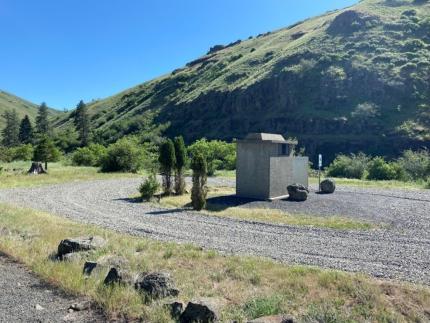
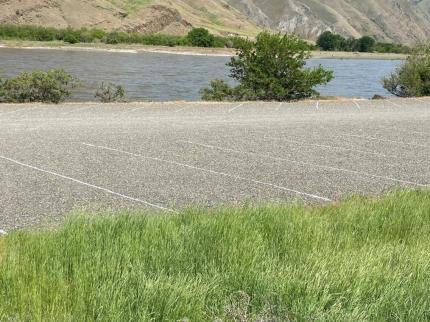
Reardan Audubon Work: Access Manager Dziekan and Natural Resource Technician Brant have been working hard on grass and weed control at Reardan Audubon Lakes Wildlife Area. Dziekan and Brant applied a couple rounds of herbicide over the last month, and this week started the cutting process. The work has been on the southern parking area only. Dziekan and Brant mowed the entrance, string trimmed the interior perimeter of the parking area, and string trimmed along the fence line leading to the blind. The plan is to come back with some more herbicide to control the grass along the fence line that is growing in the rip-rap rock.
Spading’s Catchfly Working Group Annual Meeting: Assistant Wildlife Area Manager Woodall spent two days with the Spalding’s Catchfly Working Group at their annual meeting in Moscow, Idaho. There was a field trip to some silene restoration sites in remnant Palouse Prairie.
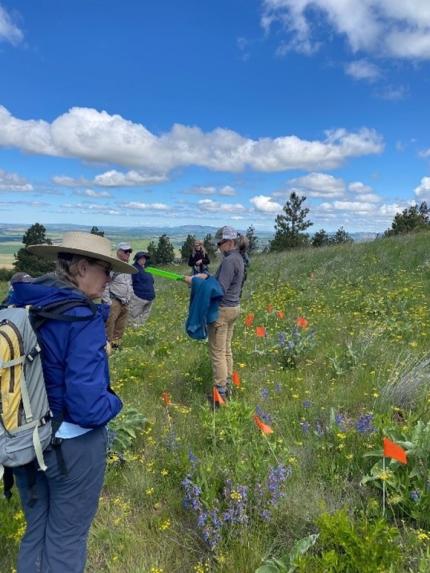
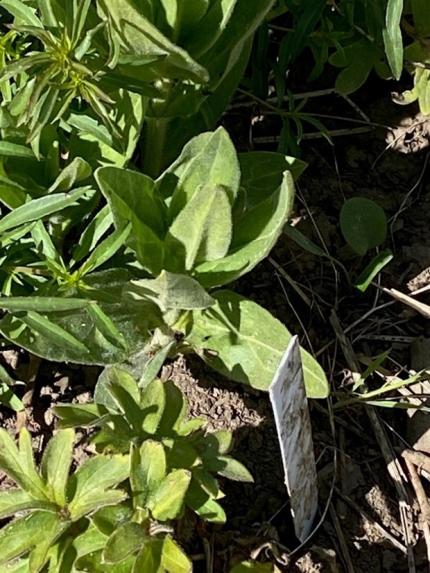
Providing Conflict Prevention and Education
Garfield County Bear Issue: Wildlife Conflict Specialist Wade received a report of a bear in the Bakers Pond area getting into trash cans at multiple cabins. Wade spoke with the reporting party who said that he had been putting out corn for deer and the bear had been observed feeding on it as well. Wade discussed the issues with putting out attractants for wildlife and that in most cases it is more of a harm for wildlife than help. The reporting party agreed to clean up the corn. Wade also directed the reporting party to haze the bear if it returned.
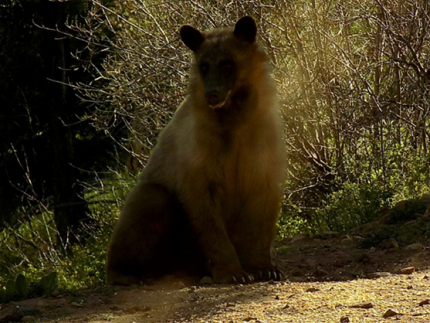
Wolf Non-Lethal Deterrents: Wildlife Conflict Specialist Kolb assisted a producer who is actively calving in Columbia Pack territory with the deployment of non-lethal deterrents on the landscape. The producer is interested in entering into a Damage Prevention Cooperative Agreement for livestock which will provide cost-sharing measures for the use of additional non-lethal tools.
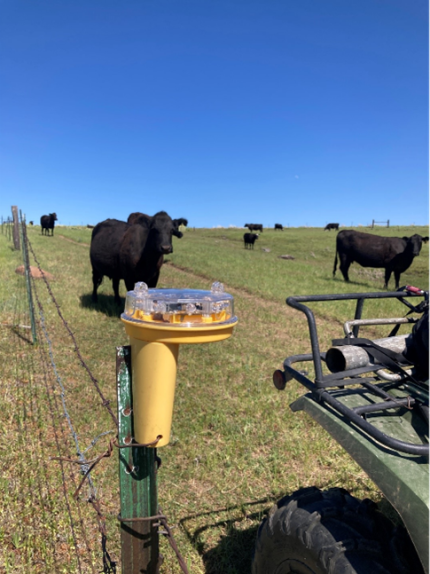
Bear Issues: Conflict staff members in Districts 1 and 3 have been responding to a lot of bear issues.
Black Bear Damage: Wildlife Conflict Specialist Kolb was contacted by a Walla Walla County strawberry producer who experiences significant black bear damage on their mountain strawberry fields every year. Kolb lent the producer some electric fencing supplies to help get through another season.
Conserving Natural Landscapes
Prescribed Burn Completion: Washington Department of Fish and Wildlife (WDFW) fire staff members carried out the long-planned prescription burn at part of Rustlers Gulch Wildlife Area on May 14 and 15. They burned over 250 acres! Rainfall during the previous weeks kept the underlying soil damp, while allowing surface duff to dry out. This minimized the loss of large living trees, while meeting the objective of removing duff and smaller-sized vegetation. Of the few large trees that did burn down, most were Douglas firs, not Ponderosa pines. Sherman Creek Wildlife Area Assistant Manager Palmer, who holds a current firefighter’s Red Card, helped with several tasks, including igniting vegetation. Approximately 20 staff members, consisting of WDFW firefighters and local fire district members, did the work. A handful of neighbors told Palmer that they were happy that the work was being done. One small girl said she wanted to fight fires someday, so Palmer pointed out Fire Planner Edwards as a role model.
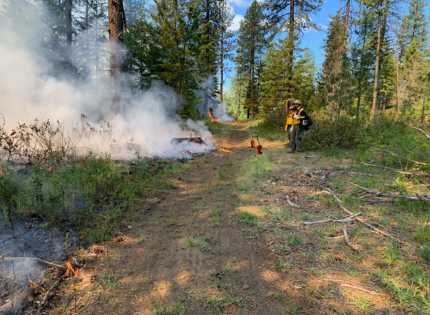
Shrub Plot Work: Wildlife Area Manager Finch and Wildlife Area Assistant Manager Wagner finished placing fabric around the smaller plants where the volunteers were short on staples last week. Finch had to order additional staples to finish this project.
Bureau of Land Management (BLM) Restoration Project- This week Wildlife Area Manager Wagner took the tractor and mower over to the BLM Assistant Agreement Restoration Project to start mowing. Washington Department of Fish and Wildlife staff members wanted to start spraying the field but since cattle were present on the field until June 8, a new plan was developed to mow to reduce the vegetation so it could be sprayed after June 8.
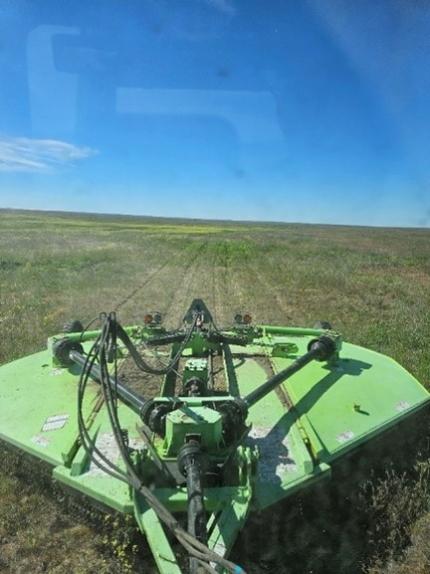
Wildlife Area Lands Weed Project Evaluations: Assistant Wildlife Area Manager Woodall met with local weed Contractor Hagenah to look at last fall’s vegetation control and their results. Himalayan blackberry has been steadily increasing over the years and they wanted to try some control efforts in George Creek. Their efforts were very impressive, and it looks like 90% of the blackberry vines are currently dead. There was some regrowth and missed vines that will need to be followed up with treatment in the fall.
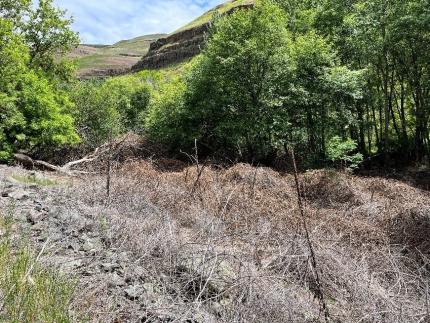
Habitat Plot: Private Lands Biologist Nizer worked with Columbia Plateau Wildlife Management Association (CPWMA) to seed a one-acre plot with clover and alfalfa for elk and deer habitat. Seed was broadcasted with an ATV seeder.
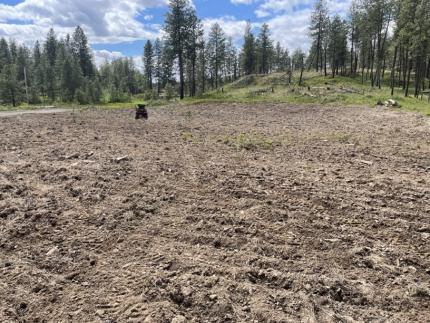
Providing Education and Outreach
Bear Education: Biologist Brinkman participated in a bear safety event with local hiking groups at the Spokane Valley Library. This event reached approximately 40 people and focused on techniques for staying safe in bear country. It included a demonstration on the proper use of bear spray using inert canisters.
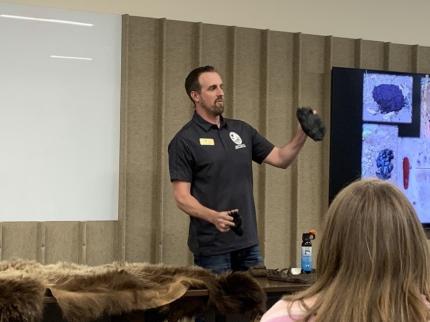
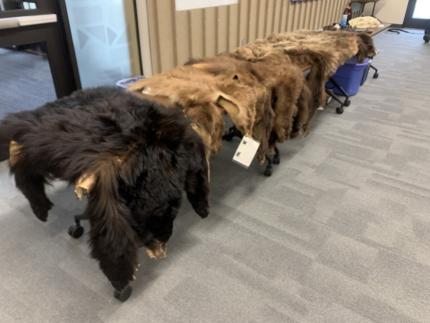
Kids in the Hills: Biologists Lowe and Brinkman, with help from Biologists LaCivita and Yamaura from the Habitat Program, provided instruction for the first three days of the annual Kids in the Hills event at Dishman Hills Natural Area, leading classes of 3rd and 4th graders on hikes in the natural area while teaching them about local wildlife. The event is organized by volunteers from the Dishman Hills Conservancy and reaches nearly 500 Spokane area students over five days.
Science, Technology, Engineering, Art, and Math (STEAM) Night: Wildlife Conflict Specialist Harris and Biologist Brinkman attended STEAM night at South Pines Elementary. Harris and Brinkman taught students about native wildlife around Spokane, including moose, black bears, and coyotes.
Camp Wooten: Wildlife Conflict Specialist Kolb taught classes at Camp Wooten for 6th grade campers from Dayton, Waitsburg, and Touchet. The topics covered included wildlife in the Blue Mountains, predator/prey relationships, species identification, and general safety when recreating in wild places.
Conducting Business Operations and Policy
Fence Contractors: Currently, Swanson Lakes Wildlife Area has two contract businesses rebuilding the boundary fence lines from damage caused by the Whitney Fire of 2020. One of the businesses, Doherty Fencing LLC is rebuilding what has been described as Area 5, 6, and 7 on the west side of the project. Four K Fencing Contractor is rebuilding what is described as Area 4 on the east side of the project. All the fence lines that will be rebuilt will be to wildlife friendly standard except where the Washington Department of Fish and Wildlife land is adjacent to an active cattle operation - then the top wire will be barbed. All other fences will be rebuilt to the top wire and bottom wire being smooth.
Lincoln County Annual Fire Meeting: Wildlife Area Manager Finch and Wildlife Area Assistant Manager Wagner attended the Lincoln County Annual Fire Meeting. Finch introduced Wagner to the group as the new wildlife area assistant manager for the Swanson Lakes, Revere, and Reardan Audubon wildlife areas. All the fire districts were present along with employees from Department of Natural Resources, The Lincoln County Sheriff’s Office, the Washington State Fire Commissioners Association, and others to give an update on each organization relating to the upcoming fire season. Finch and Wagner updated the group on water tank placements within the wildlife area, the fence building project, and other information.
Managing Wildlife Populations
District 4 Burrowing Owl Nest Monitoring: District 4 Wildlife Biologist Fidorra and Assistant Wildlife Biologist Hoffman monitored artificial burrows for nesting owls with staff members and volunteers. The artificial burrows are in high demand following a mild El Nino winter allowing many owls to stay in Washington over the winter and experience high survival. Many sites designed for only one pair of owls currently have two pairs nesting at the artificial burrows, emphasizing the lack of suitable burrows and habitat for the species in our area, and the importance of the artificial burrow project.
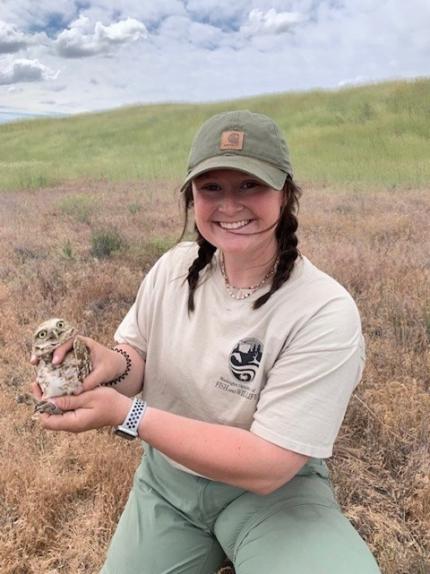
Bighorn Sheep Lamb Monitoring: District 8 Wildlife Biologist Wampole and Assistant Wildlife Biologist Moore continue monitoring lambing in the district bighorn sheep herds including the Quilomene, Yakima, and Cleman Mountain populations. We are looking to establish peak lamb to ewe ratios and monitor for any signs of illness including coughing, nasal discharge, or lethargy that are consistent with Movi infections.
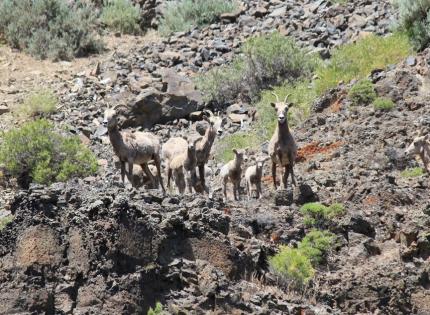
Townsend Ground Squirrel Monitoring: District 8 Wildlife Biologist Wampole and Assistant Wildlife Biologist Moore continue to survey for Townsend ground squirrel colony sites. Ground squirrels were once common. Washington Department of Fish and Wildlife has noticed declines in historically occupied sites. To better assess this, biologists have been working to assess historic site status and identify new locations of colonies to determine if breeding is occurring. Efforts to solicit public observations of these tailless ground squirrels are ongoing. If you see one please submit reports using WDFW’s ‘At-Risk’ Wildlife Observations form.
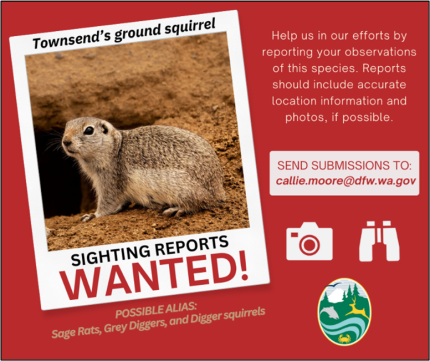
Providing Recreation Opportunities
Region 3 Special Permit Season: The Customer Service and Wildlife Program staff members addressed a record number of inquiries from hunters (in person, on phone, and by email) and they offered invaluable guidance to aid hunters in making informed choices regarding their applications for special hunts.
Providing Conflict Prevention and Education
Tree Removals During Nesting Season: Assistant District 8 Wildlife Biologist Moore has been called to address instances of tree removal involving existing nests. Initially, a western screech owl was found nesting within a tree that was slated to be removed. Moore inspected the tree cavity and set up a motion-activated trail camera to monitor activity. However, it was determined that the owl had vacated the area, thus alleviating concerns of ongoing nesting.
In another scenario, a local tree-cutting service was tasked with removing a potentially hazardous tree on private property. During the limb removal process, it was discovered that one of the tree's natural hollows served as a nest for several kestrel nestlings. Promptly recognizing the need for guidance, the company reached out to the Washington Department of Fish and Wildlife (WDFW) for advice. In accordance with the federal Migratory Bird Treaty Act, the company was instructed not to proceed with tree removal until the nestlings have fledged, ensuring compliance with legal protections for migratory birds.
Wenas Wildlife Area – Roza Posts and Cable: Wenas Wildlife Area Lands and Recreation Specialist Frame, Natural Resource Technician Janes, and Assistant Manager Taylor installed posts extending out from the gate blocking access to the Roza Road. There have been issues with people driving around the gate and illegally accessing the area. A cable will be strung along the posts to help prevent people from driving into the area.
Corral Canyon Elk Area Summer Bull Permits: District 4 Wildlife Conflict Specialist Hand monitored and coordinated damage prevention permit (DPP) hunts in elk area 3721. Ten bull elk have been harvested thus far. Non-lethal hazing in crop fields continues during nocturnal hours.
Kahlotus Deer Damage: District 4 Wildlife Conflict Specialist Hand inspected several wheat fields in the Kahlotus area that have historically received substantial deer damage. Heavy deer damage has occurred in a few areas, especially near remote locations near the breaks of the Snake River.
Richland Deer: District 4 Wildlife Conflict Specialist Hand responded to a call concerning an injured deer in Richland. While in route to the area the deer died from its injuries sustained in a vehicle collision along a very busy roadway. The young buck deer was transferred to a Washington Department of Transportation carcass pit.
Kittitas County Conflict: District 8 Conflict Technician Leuck and Conflict Specialist Wetzel hazed some elk from areas in Kittitas County. Elk ventured to areas in Thorp, Vantage, Kittitas, Badger Pocket, and Cle Elum mostly following migratory routes and visiting some crop fields and new seedings. Leuck and Wetzel also responded to several elk that were struck on I-90. Elk have been hazed away again from I-90 in some locations.
District 8 Conflict Specialist Wetzel responded to several calls about black bears that have been nuisances and have low fear of humans in a neighborhood in Hyak. Trapping has been underway.
Yakima County Conflict: District 8 Conflict Technician Leuck and Conflict Specialist Wetzel checked for elk in the Tampico and Cowiche areas and inspected fences in those locations. Elk appear to have moved up and away from the winter damage areas.
Bumping Lake Deer: District 8 Conflict Specialist Wetzel rescued a deer trapped in the spillway at Bumping Lake.
Conserving Natural Landscapes
Wallula Gap Vineyards Food Plot: Region 3 Private Lands Biologist Manderbach met with two landowners in Benton County to do a site visit for a potential food plot project. The main concern that brought the idea up is deer eating young grapes, and the landowners thought of implementing a food plot to attract the deer away from the grapes. They are also required to use water this summer and a food plot would be a great project to use extra water. In total there would be 130 acres to work with. Manderbach has been working with staff members from the Benton Conservation District to help with the implementation of the project. The timing of finding out about this idea was not ideal, but a temporary food plot may be implemented this year with a better native mix along with shrub rows being added in starting this fall.
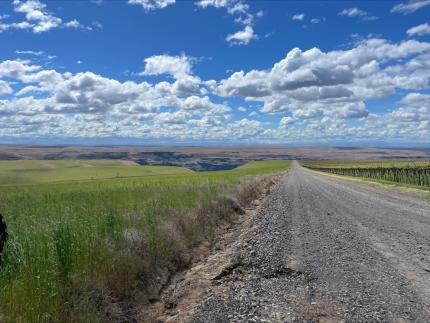
Wenas Wildlife Area – Weed Control: Wenas Wildlife Area staff members have continued weed treatment throughout the wildlife area. The primary target for spot spraying with backpack sprayers has been whitetop, but Canada and Scotch thistle are still being found. Natural Resource Technician Janes sprayed the firebreaks and parking areas in the southern portion of the wildlife area to help hinder the movement of fires through the wildlife area.
Wenas Wildlife Area – Mowing: Wenas Wildlife Area Lands and Recreation Specialist Frame mowed the McCabe restoration site to knock down cereal rye in the area and prepare for weed spraying. Natural Resource Technician Stoltenow mowed around the Mellotte office and the Wenas Wildlife Area Headquarters to help reduce the risk of fires.
L.T. Murray Wildlife Area Quilomene Grazing: The bison are back on the Quilomene Unit leading to a heightened interest in figuring out some fencing issues in the Parke Creek drainage.
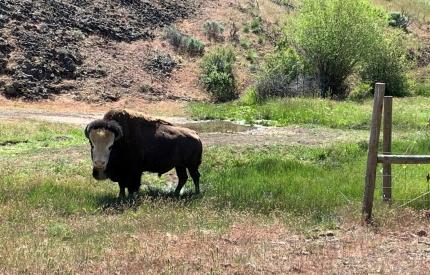
L.T. Murray Wildlife Area Relic Barbed Wire Cleanup: L.T. Murray Wildlife Area Assistant Manager Winegeart led a volunteer effort to remove old barbed wire from the Whiskey Dick Unit of the L.T. Murray Wildlife Area. The day was a great success with over a half mile of barbed wire being taken down and removed from the landscape.
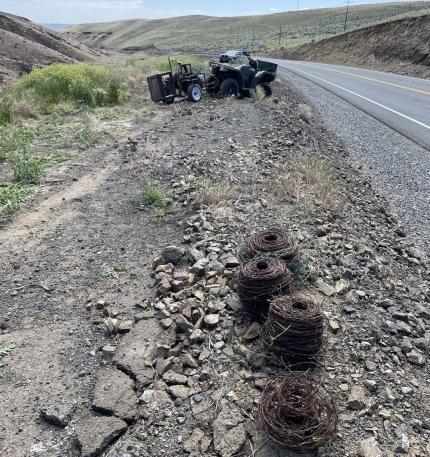
L.T. Murray Wildlife Area Cole Creek Resource Protection: The L.T. Murray Wildlife Area crew placed 3,800-pound concrete blocks across an off-road trail some individuals had been using to go around the broken Cole Creek Bridge on the Yakima River Unit. Someone moved one of the blocks the first weekend after installation and more than a half dozen vehicles were seen and/or cited for driving around the blocks and subsequently through Cole Creek. An extra block and additional signage will be added soon.
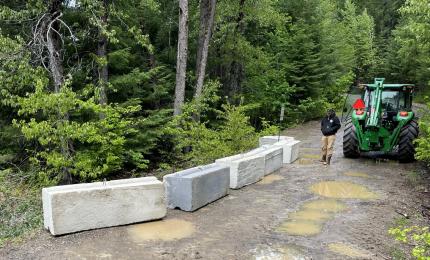
Oak Creek Wildlife Area Volunteer Service Day: Oak Creek Wildlife Area Assistant Manager Charlet and 20 Rocky Mountain Elk Foundation volunteers used a combination of mechanical and chemical control to treat approximately 20 acres of land around Mud Lake. This area has a dense infestation of dalmatian toadflax with occasional Canada thistle, knapweed, and mullein plants found.
Oak Creek Wildlife Area Weed Control: Oak Creek Wildlife Area staff members have continued weed treatment throughout the wildlife area. The primary focus has been on the chemical control of Scotch thistle, but as time allows all species on the noxious weed list are controlled. Contractors have also started chemically controlling noxious weeds in various areas on the Oak Creek and Cowiche units, primarily focusing on Scotch thistle.
Sunnyside-Snake River Wildlife Weed Control: Sunnyside-Snake River Wildlife Area staff members have been busy applying herbicide to Scotch thistle, houndstongue, and other noxious weeds. Windy weather has delayed some of the herbicide applications. Staff members have also been cleaning litter and debris from wildlife area access sites.
Colockum Wildlife Area: Colockum Wildlife Area staff members ordered multiple dump truck loads of rock to be dumped into mudholes created by 4X4’s at Lily Lake. There is a long history of “mudding” at Lily Lake in the Stemilt Basin and they are attempting to discourage this by dumping sharp angular rock into the worst of the mudholes. Rock will be spread out to make mudding a little less attractive.
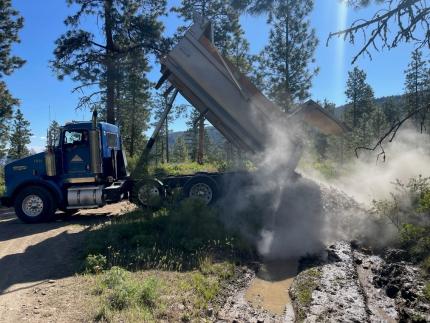
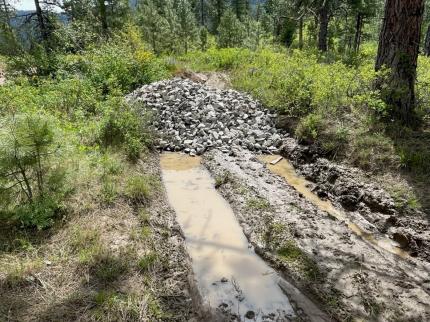
Providing Education and Outreach
Sacagawea Park Salmon Celebration: Region 3 Private Lands Biologist Manderbach led birdwatching walks for elementary classes as part of the Franklin Conservation District’s Salmon Celebration at Sacagawea Park. Each class was able to see a handful of different bird species while following general birdwatching rules of remaining quiet and moving slowly. Many of the students were very excited and some were even pointing out birds for their classes. The highlight of the day was a raccoon peeking its head out of a tree cavity that a few of the classes were lucky enough to see.
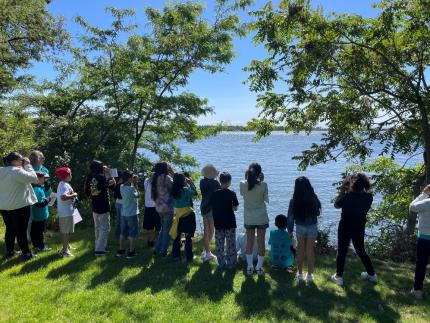
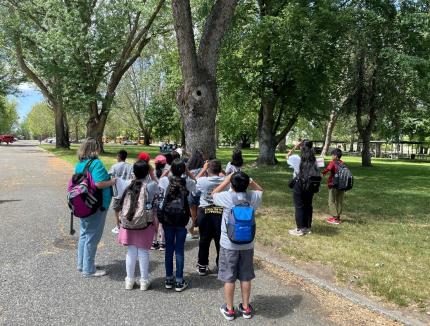
Sunnyside-Snake River Wildlife Area Outreach: Sunnyside-Snake River Wildlife Area Manager Kaelber and Natural Resource Technician Edwards taught students attending Salmon Celebration about the wildlife found in the State of Washington. Students were able to touch and feel various animal pelts, antlers, and skulls.
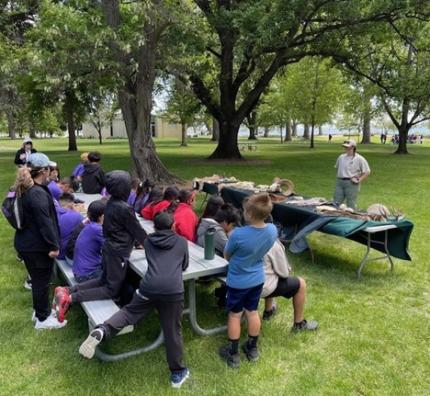
Mesa Elementary Ecology Day: Region 3 Private Lands Biologist Manderbach, with the help of an environmental educator from the Franklin Conservation District, worked a station at the annual Ecology Day at Mesa Elementary. Students attended 30-minute stations throughout the day with different presentations and activities centered around ecology and the environment. This year Manderbach put on a seedball workshop while speaking about wildflowers and pollinators. Each student crafted three to five seedballs using a compost/clay powder/water/wildflower seed mix. Some of the species in the mix included western yarrow, Lewis blue flax, arrowleaf balsamroot, and Munro’s globemallow.
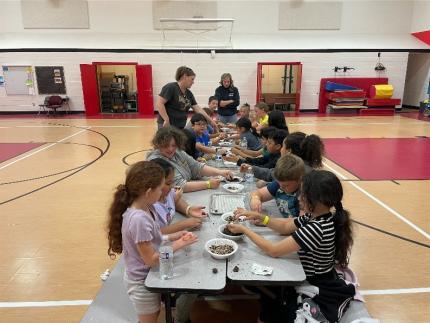
Wenas Wildlife Area – Legoman Kiosk: Wenas Wildlife Area Assistant Manager Taylor, Lands and Recreation Specialist Frame, and Natural Resource Technicians Stoltenow and Janes installed a kiosk and reader-board in the Legoman portion of the wildlife area. The reader-board shows information regarding the proper usage of green dot roads and will have a green dot map in the future. The kiosk has information on regulations for recreational use of the wildlife area as well as information about the wildlife area.
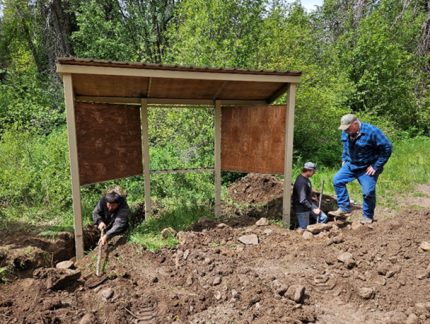
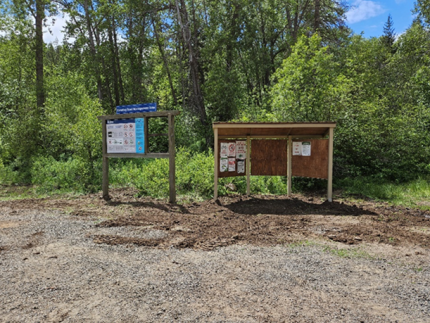
Conducting Business Operations and Policy
Wenas Wildlife Area- RCO Grant: Wenas Wildlife Area Manager Gray and Habitat Specialist Miller presented a proposed project on the Wenas Wildlife Area to The Recreation and Conservation Office (RCO). Grants from RCO help to supplement acquisition funding for the wildlife area as well as contribute toward essential conservation work.
Other
District 4 Burrowing Owl Supplies: District 4 Wildlife Biologist Fidorra coordinated with the Blue Mountain Audubon Society chapter to purchase supplies for U.S. Fish and Wildlife Service artificial burrows for burrowing owls. Fidorra received and delivered supplies to the Hanford Reach National Monument staff members.
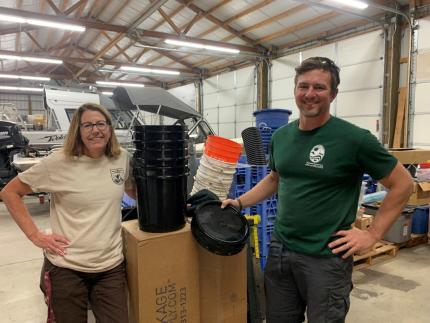
Oak Creek Wildlife Area Abandoned Trailer: Oak Creek Wildlife Area Assistant Manager Charlet found an abandoned trailer on the Cowiche Unit after the long Memorial Day weekend. Law enforcement was contacted and were very responsive and helpful in working through the process to resolve this situation.
Managing Wildlife Populations
Grouse Surveys: Biologist Murphie conducted sooty grouse survey work along four routes in District 15. Biologists Novack and Cent, along with Technician Martinez, established transect lines and completed surveys for sooty grouse in District 17.
Taylor’s Checkerspot Surveys: Biologist Murphie participated in activities related to Taylor’s checkerspot butterfly surveys in District 16.
Western Pond Turtle: Biologist Murphie conducted work related to western pond turtle recovery at the site he manages in District 15.
Deer and Elk: Biologist Murphie participated in fawn and calf collaring activities related to research being conducted by the Makah Tribe in District 16.
Marbled Murrelet: Biologist Murphie participated in marbled murrelet capture activities related to research being conducted by the Washington Department of Fish and Wildlife (WDFW) Marine Bird Research Section related to marbled murrelet diet.
Bats: Biologist Murphie participated in bat capture activities in the Hamma Hamma area as part of a white-nose syndrome surveillance effort.
Snowy Plovers: Biologist Cent led efforts to conduct the range-wide breeding survey for western snowy plovers. Biologist Novack assisted, along with Wildlife Area Technicians Martinez and Magliaro, and an assortment of Diversity Division staff members, U. S. Fish and Wildlife Service Biologist Ritchie, Shoalwater Biologist Sundstrom, and EcoStudies Technician Marty. All sites were surveyed, and the overall numbers seemed robust compared to last year.
Biologist Cent continues to assist with plover nest searches and chick banding. A pair of chicks were captured and banded at Copalis Spit. These are the first plovers banded in Washington in many years.
Streaked Horned Lark: Biologist Cent surveyed the Shelton Airport for streaked horned larks. Only one bird was seen.
Band-Tailed Pigeon: Biologist Novack, along with Section Manager Spragens and Biologist Behling, conducted captures of band-tailed pigeons in the Kala Point neighborhood near Port Townsend. A dozen birds were captured and banded. Five of those birds were fitted with Ornitela brand transmitters that will allow the agency to track their movements and help identify new mineral sites. Thanks to various members of the neighborhood housing association for allowing access to their properties.
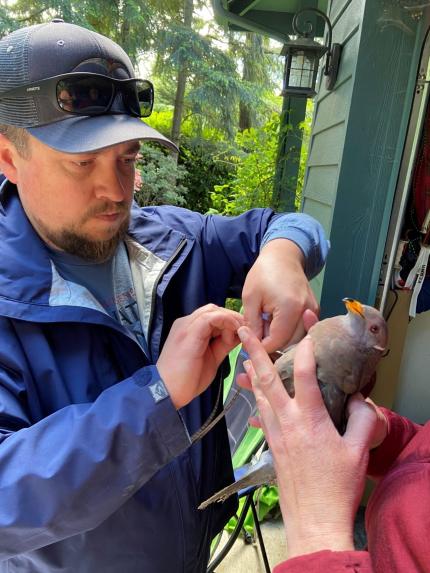
Conserving Natural Landscapes
Wildlife Area Maintenance: Technician Norris maintained vegetation around the parking areas at the Dungeness and Chimacum units of the North Olympic Wildlife Area.
South Puget Sound Spring Work Party: The Clover Park Rotary Club hosted their biannual work party at the South Puget Sound Unit in Lakewood. They had over 50 volunteers out to help pull weeds, plant native plants, and clean up trash.
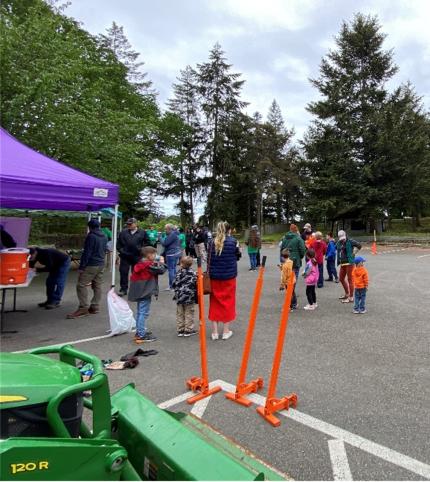
Protection Island Restoration: Technician Norris and Wildlife Area Manager Laushman visited the Zella Schultz Unit on Protection Island. They treated invasive mustards and thistle.
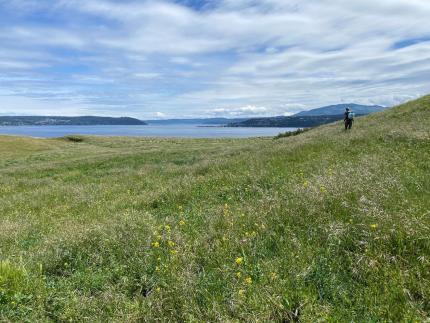
Recreation and Conservation Office (RCO) Grant: Biologist Novack presented an RCO-Riparian Grant application to RCO tech reviews. The committee provided some feedback on how to improve the application.
Providing Education and Outreach
General Wildlife Inquiries: Biologist Murphie responded to inquiries received by phone or email related to hunting seasons and pamphlets, bats, and river otters.
Theler Wetlands: Wildlife Area Manager Laushman met with staff members from the Hood Canal Salmon Enhancement Group (HCSEG) and Washington Department of Fish and Wildlife Communications and Public Engagement (CAPE) Program to discuss the next steps with the Theler Exhibit Hall recently acquired by WDFW at the Union River Wildlife Area in Belfair. Washington Department of Fish and Wildlife and HCSEG are working together to get the exhibit hall ready for public use again and are also working on estuary restoration and trail restoration work at the unit.
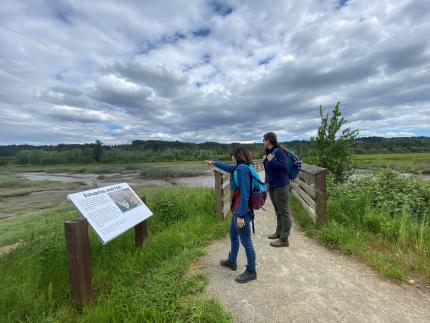
Conducting Business Operations and Policy
Diversity Grant: Biologist Novack and Cent reviewed applications for funding by the Diversity Division and submitted their evaluation scores.
Diversity Technician Hiring: The process is continuing to hire diversity technicians that will work in Region 6.